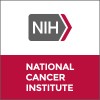R(+)XK469 in Treating Patients With Advanced Neuroblastoma
Disseminated Neuroblastoma, Localized Unresectable Neuroblastoma, Recurrent Neuroblastoma

About this trial
This is an interventional treatment trial for Disseminated Neuroblastoma
Eligibility Criteria
Inclusion Criteria: Histologically confirmed high-risk neuroblastoma that has relapsed or is refractory to standard therapy No active brain metastases Previously treated brain metastases allowed if there is no requirement for corticosteroids or anticonvulsants Performance status - Karnofsky performance status 70-100% or Lansky score ≥ 70 for your pediatric patients More than 3 months WBC at least 3,000/mm^3 Absolute neutrophil count at least 1,500/mm^3 Platelet count at least 100,000/mm^3 Bilirubin normal (unless due to documented Gilbert's syndrome) Creatinine less than 1.5 times upper limit of normal No symptomatic congestive heart failure No unstable angina pectoris No cardiac arrhythmia Not pregnant or nursing Negative pregnancy test Fertile patients must use effective contraception No other concurrent uncontrolled illness that would preclude study participation No ongoing or active infection No psychiatric illness or social situation that would preclude study participation No prior allergic reaction to compounds of similar chemical or biological composition to study drug (e.g., flurbiprofen or ibuprofen) No HIV-positive patients No concurrent biologic agents At least 4 weeks since prior chemotherapy (6 weeks for nitrosoureas or mitomycin C) No other concurrent chemotherapy See Disease Characteristics At least 4 weeks since prior radiotherapy No concurrent palliative radiotherapy See Disease Characteristics Recovered from all prior therapy No other concurrent investigational agents No concurrent commercial agents or therapies directed at malignancy No concurrent combination anti-retroviral therapy for HIV-positive patients
Sites / Locations
- University of Chicago Comprehensive Cancer Center
Arms of the Study
Arm 1
Experimental
Treatment (chemotherapy)
SCHEDULE A: Patients receive R(+)XK469 IV over 30 minutes on days 1, 3, and 5. Courses repeat every 3 weeks in the absence of disease progression or unacceptable toxicity. Cohorts of 3-6 patients receive escalating doses of R(+)XK469 until the recommended phase II dose or MTD is determined. The MTD is defined as the dose preceding that at which 2 of 6 patients experience dose-limiting toxicity. Once the MTD is determined, additional patients are accrued and treated at the recommended phase II dose (for a maximum of 20 patients treated at that dose). SCHEDULE B: Once the recommended phase II dose is determined on schedule A, additional patients are accrued and receive escalating doses of R(+)XK469 IV over 30-60 minutes on day 1, beginning at a reduced dose. Courses repeat every 3 weeks in the absence of disease progression or unacceptable toxicity. Dose escalation continues as in Schedule A.
Outcomes
Primary Outcome Measures
Secondary Outcome Measures
Full Information
1. Study Identification
2. Study Status
3. Sponsor/Collaborators
4. Oversight
5. Study Description
6. Conditions and Keywords
7. Study Design
8. Arms, Groups, and Interventions
10. Eligibility
12. IPD Sharing Statement
Learn more about this trial
